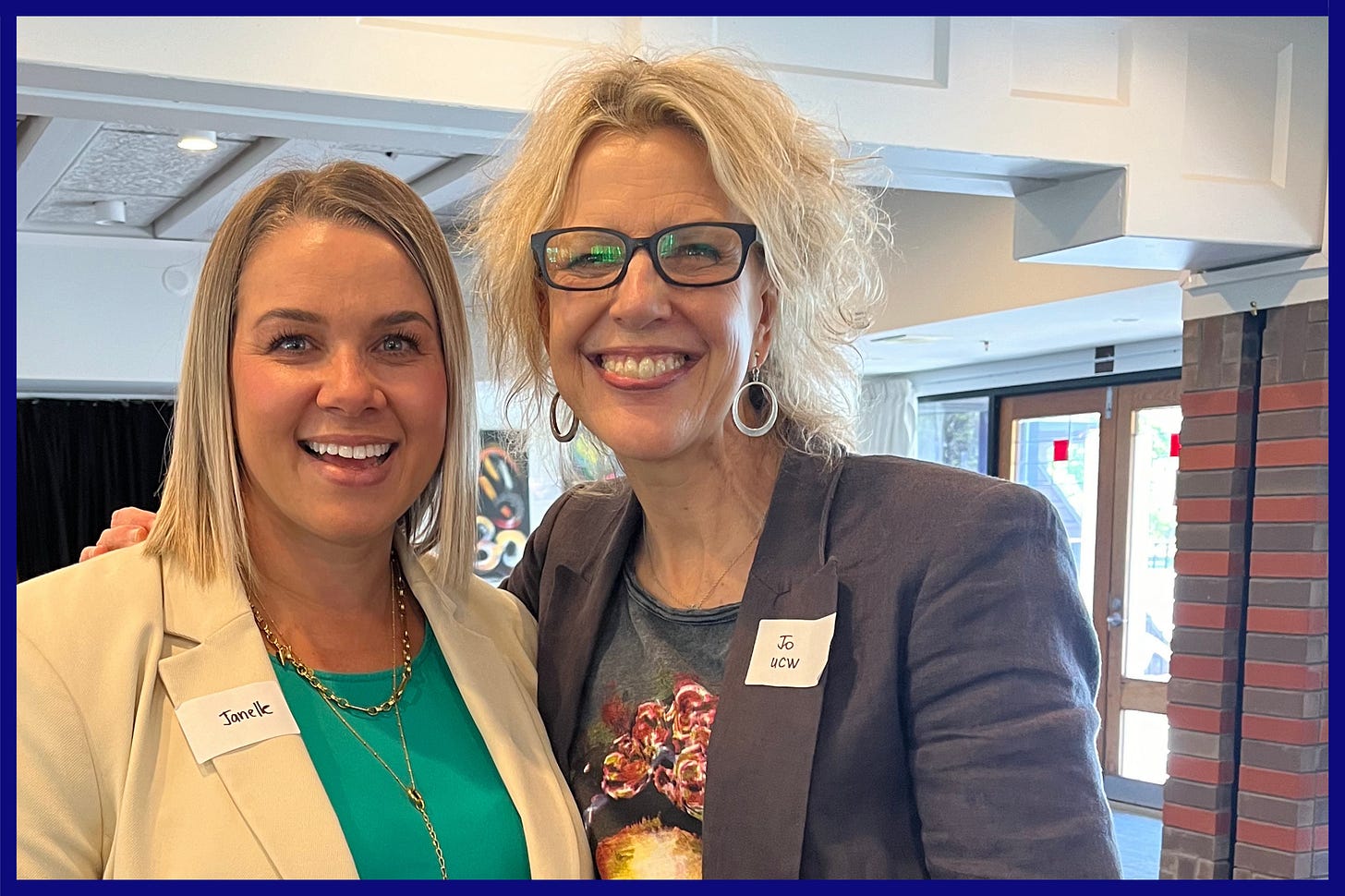Healing through community – the Uniting Canterbury Women story
What the World Can Learn from Canterbury
At the Fife Foundation, we believe the most enduring change doesn’t always come from institutions or policy. It comes from people. From relationships. From spaces like those created by Uniting Canterbury Women (UCW)—where healing isn’t prescribed, but practiced.
UCW’s model of community care is not just a local treasure—it’s a global blueprint. It shows us that community can be the cure. That healing happens not just in moments of crisis, but in the everyday work of choosing compassion over fear, connection over isolation.
Fife’s Janelle Sara & UCW’s co-founder Jo Bailey at an “Around the World in Eight Cafes” event in 2024
The Moment That Changed Us
On March 15, 2019, Aotearoa was forever changed. The terror attacks on two Christchurch mosques shook our collective psyche, confronting us with the darkest corners of hatred. But in the wake of that horror, something beautiful began to grow. In homes, cafés, mosques, and community halls, women reached for one another—not to save or fix, but to listen, to share, and to stand together.
From the darkness of March 15th, 2019, emerged a community of light—sustained not by funding or fanfare, but by the quiet, determined power of wāhine who refused to look away.
One of the most enduring legacies of that time is Uniting Canterbury Women (UCW)—a grassroots, collective formed not as a charity or a service, but as a sanctuary of connection. Co-founded by six women—over coffee and cake.
UCW is a living model of what community psychology calls praxis: values in action (Prilleltensky, 2005). Their work reminds us that healing doesn’t always come in formal packages or clinical spaces. Sometimes it comes over shared kai, in circles of trust, in the quiet power of being seen and heard.
Left: Wāhine from UCW at ‘TEA for THREE” event at Scoundrel in Christchurch; Right: Wāhine from UCW at the ‘Around World in Eight Cafes’ lunch event at the Christchurch multicultural Centre
A Living Model of Therapeutic Community
UCW doesn’t just host events; they weave relationships. They create spaces where wāhine across all cultures can gather, reflect, and rebuild—together. This aligns with the model of a therapeutic community, where healing arises organically through mutual support, shared stories, and relational trust (Haigh, 2013).
This approach echoes the work of community psychologists like Prilleltensky and Nelson (2010), who argue that true wellbeing emerges at the intersection of the personal, relational, and collective. UCW embodies this intersection with every welcome gathering, every kōrero, every quiet moment of shared grief or laughter.
Wāhine from UCW and the Fife Foundation team at the most recent at the ‘Around World in Eight Cafes’ lunch event 2025
From Welcome Packs to Sisterhood
Since its first event in July 2019—attended by nearly 600 women—UCW has continued to evolve, responding to the needs of the moment while staying anchored in its founding values: compassion, inclusion, and manaakitanga. Whether delivering welcome packs to Afghan evacuees, creating online and in-person events, and running its signature Around the World in Eight Cafes lunches (sponsored by Fife Foundation) and Tea for Three evening gatherings, UCW’s mission remains constant: to build a stronger, more connected Canterbury—one relationship at a time.
Their gatherings often look informal—shared food and conversation—but this is precisely their magic. They create a psychological sense of community, something Sarason (1974) described as a key protective factor for mental health. People are not treated as clients to be fixed, but as co-creators of culture and connection (McMillan & Chavis, 1986).
Wāhine at the UCW inaugural event, July 2019
At the Fife Foundation, we believe the most enduring change doesn’t always come from institutions or policy. It comes from people. From relationships. From spaces like those UCW holds—where healing isn’t prescribed, but practiced.
UCW’s model of community care is not just a local treasure—it’s a global blueprint. It shows us that community can be the cure. That healing happens not just in moments of crisis, but in the everyday work of choosing compassion over fear, connection over isolation.
From the darkness of March 15th emerged a community of light—sustained not by funding or fanfare, but by the quiet, determined power of wāhine who refused to look away.
UCW in support of our Muslim community outside the courthouse on sentencing day (2020)
If you want to support or connect with Uniting Canterbury Women, you can learn more about their story and events by clicking on the button below
References
Haigh, R. (2013). The quintessence of a therapeutic environment: Five universal qualities. Therapeutic Communities, 34(1), 6–15.
Kagan, C., Burton, M., Duckett, P., Lawthom, R., & Siddiquee, A. (2011). Critical Community Psychology. BPS Blackwell.
McMillan, D. W., & Chavis, D. M. (1986). Sense of community: A definition and theory. Journal of Community Psychology, 14(1), 6–23.
Nelson, G., & Prilleltensky, I. (2010). Community Psychology: In Pursuit of Liberation and Well-being. Palgrave Macmillan.
Prilleltensky, I. (2005). Promoting well-being: Time for a paradigm shift in health and human services. Scandinavian Journal of Public Health, 33(66_suppl), 53–60.
Sarason, S. B. (1974). The Psychological Sense of Community: Prospects for a Community Psychology. Jossey-Bass.














